Now quickly let’s have a glance on the Agamic origin of Anekantavada - In Jain religion, tradition has it that the first Tīrthaṅkara of avasarpinī kāla, Lord Rsabhanātha, is the originator of anekāntavāda. We do not find the word Anekānta anywhere in Jain canonical literature called 'Aagams', but the pure essence of Anekāntavāda, Syadvada is present throughout. Nothing has been explained devoid of this core philosophy.
We find an incident in the sixteenth chapter (śataka) of Bhagavatīsūtra, where Śramaṇa Mahāvīra before attaining kevala-jñāna or the supreme knowledge dreamt ten dreams in the temple of Śulpani Yakṣa at Asthika village. Among these ten dreams, the third dream was of a male-cuckoo with strange wings, and by seeing it, he became 'pratibudha’ or enlightened. According to Bhagavatīsūtra this dream meant that Lord Mahāvīra would interpret a strange kind of sva-samaya (his own) and para-samaya (other's) philosophy.
taṇṇaṅ samaṇe bhagavaṃ Mahāvīre vicittaṃ sasamayaṃparasamaiyaṃ...ityādi.
Pandit Dalsukh Malavaniya has clearly connected this dream with the idea of anekāntavāda. Incidentally, this dream is not found in the form of a painting as far as my knowledge goes; but the dream is definitely a mental picture. He explained the significance of the third dream in terms of non-absolutism. Spurred on by such traditions, I felt inspired to interpret many of the principal ideas of Jain philosophy through paintings.
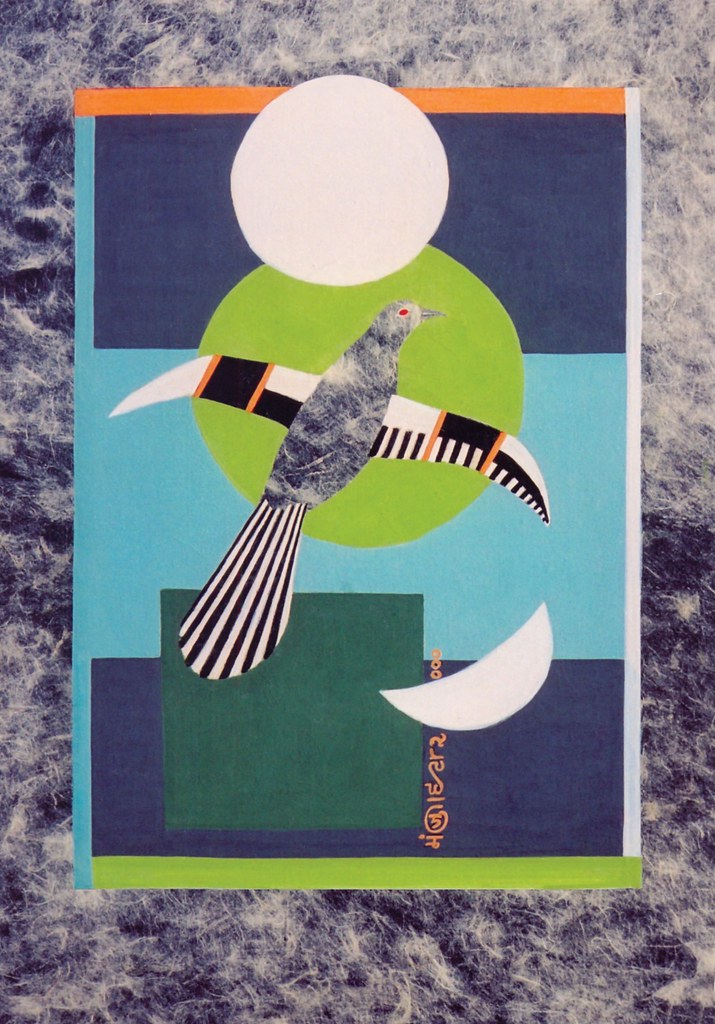
It is true that an artist, according to his will, may give form to his art in three ways - realistically, orientally, and symbolically. According to psychology, our dreams are more symbolic than realistic. It is no wonder that Śramana Mahāvīra saw anekāntavāda revealed in the strangeness of the wings of the Cuckoo.
In the painting 'Svapna: Satya" ('Dream: Reality'), I have blended the strange-winged bird with the concept of sapta-bhaṅgī and shown it imaginatively in the bird's wings. We should note that in terms of the Jain philosophy the process of thinking is known as anekānta-dṛṣti and that the manner of expressing it through a comprehensible medium is generally called syādvāda.
According to Samantbhadra in his book Āpta Mīmāṃsā the word syāt means from one point of view, without negating the other point of view. This depends upon the sevenfold Saptabhaṅgī and is distinguished by things to be discarded or acquired. According to the principles of sapta-bhaṅgī, reality can be described in the following seven ways.
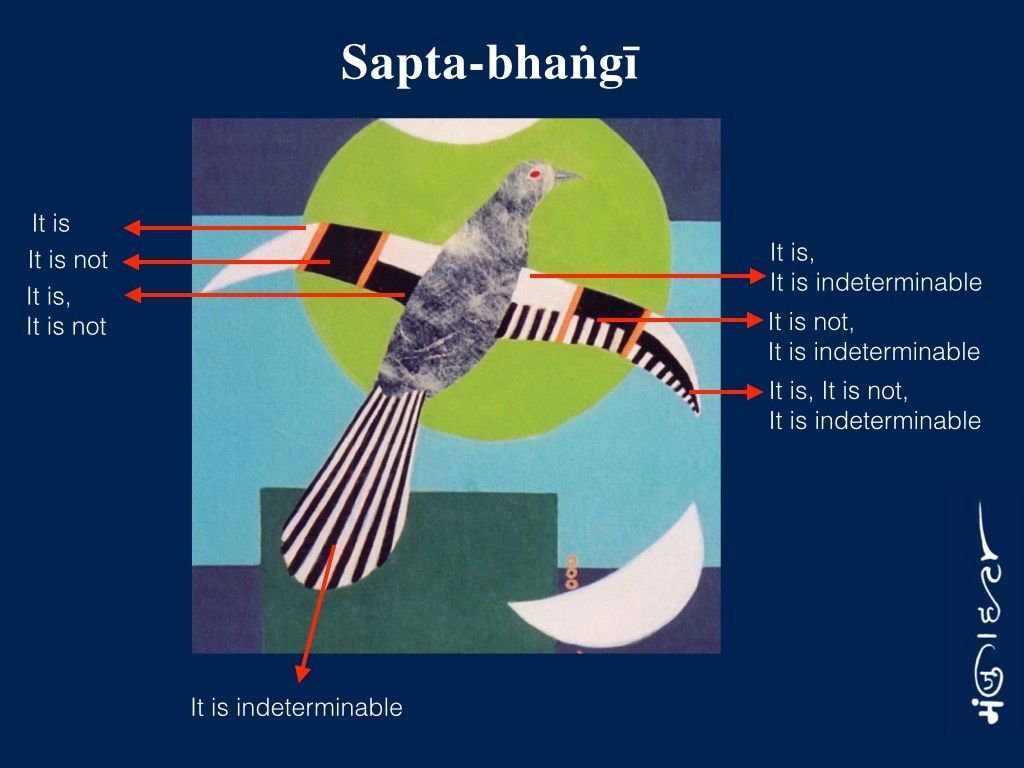
|
Here the white colour stands for 'it is', ie. existence or affirmation while the black colour represents 'it is not', non-existence or negation. And the zebra like colour stands for 'indeterminableness'.
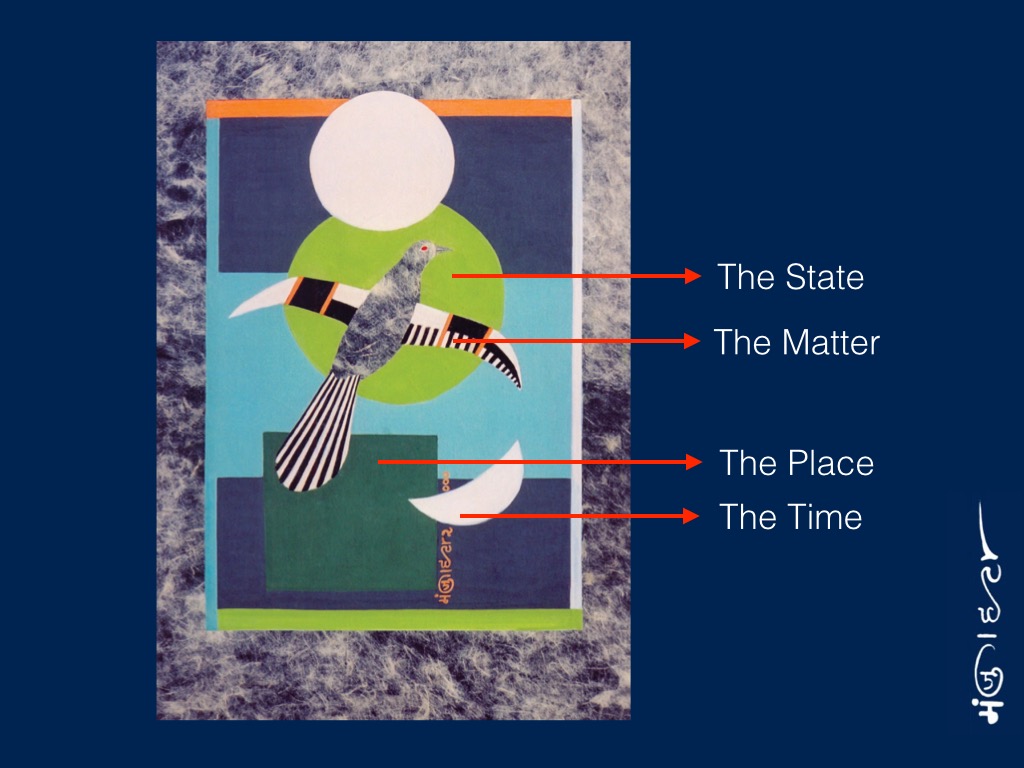
Ācārya Samantbhadra states that whenever, we predicate either affirmatively or negatively our predication depends upon four aspects- matter, place, time, and state. Now, we will understand this saptabhaṅgī with respect to these four aspects.
In this painting the matter is the bird itself; the dark green square denotes the place. The sun and the moon painted in white stand for time; and the light green circle behind the bird denotes the state, that the bird is in the state of flying.
The name of this painting, 'Svapna: Satya' (Dream: Reality), itself denotes anekāntavāda. Dream is a mental phenomenon occurring in our unconscious state while we are asleep, but as we objectify it through a painting, it becomes permanent. Generally dreams are considered to be a creation of mind whereas reality exists outside the mind as well. Śramana Mahāvīra's dream itself became a truth.
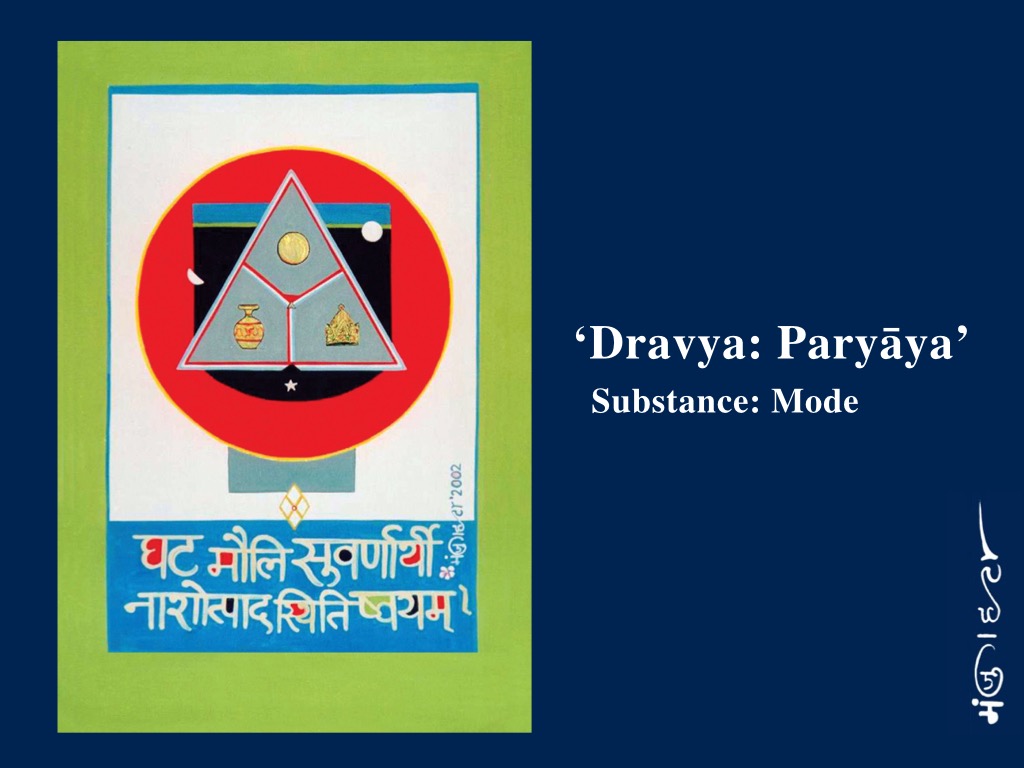
Anekānta signifies that the substance and modes stay together. It is not possible to have existence of only substance or only mode because Reality is made up of both substance and mode, permanence and change. So we come to the conclusion that every mode is as much a part of reality as the substance is. Thus, the substance and modes cannot be separated from one another. In fact, they cannot exist without each other. Modes and qualities reside in substance and we recognise the substance because of its qualities and modes.
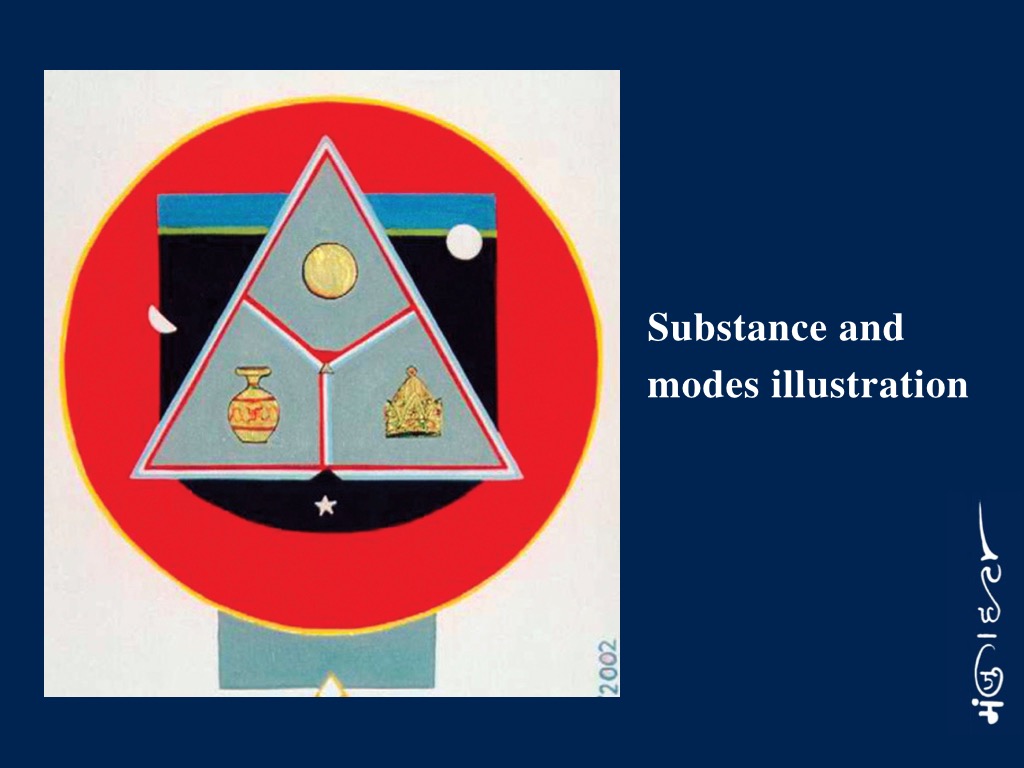
Here Jain scholar Haribhadra has proven that the tripadī of anekāntavāda i.e. origination, cessation and existence, stay together in one thing. He has illustrated his point by means of an example in which three friends go to a goldsmith's shop, where the goldsmith was melting a gold pitcher to make a golden crown. Observing his work, each of the three friends had different impressions. The first one, who wanted the golden crown, was happy because he was making the crown; the second one, who wanted the golden pitcher, was, however, unhappy as the goldsmith was melting the pitcher; and the third one, who was in need of the gold, was happy in either state, whether in the form of a pitcher or crown. The painting shows that 'gold' is the 'substance' and its other forms are different 'modes'.
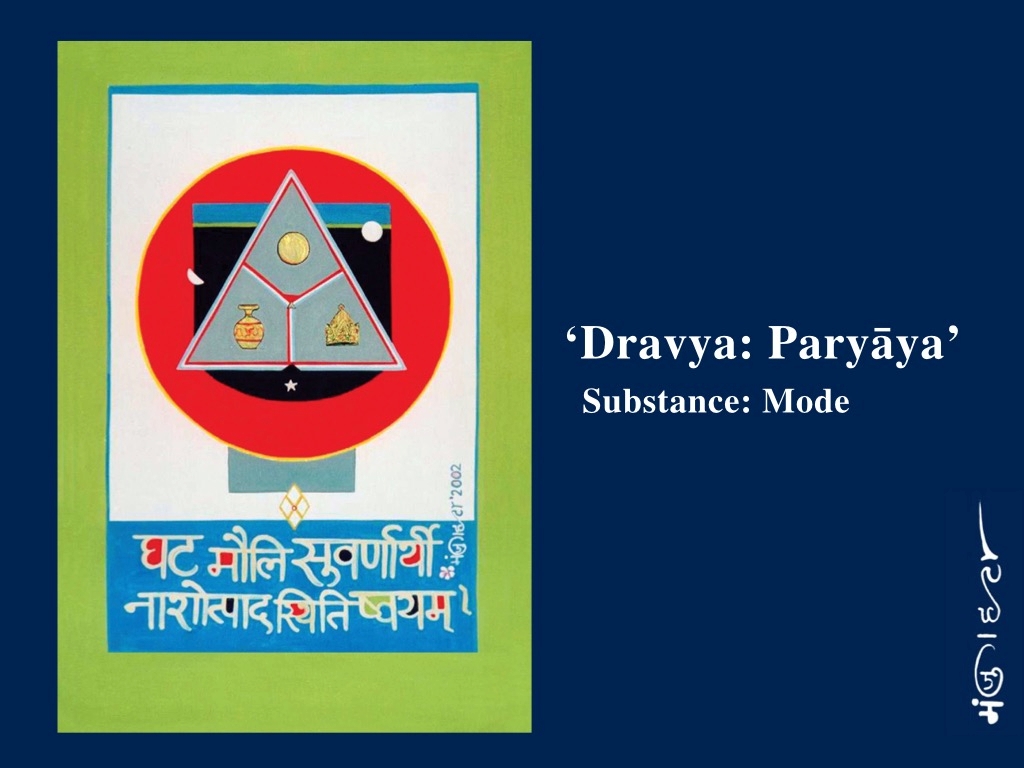
The entire focus is pointed to a triangular figure with the gold standing at the top and the pitcher and the crown, on either side. In this way ācāryas have shown that both permanence and impermanence stay together in the substance. A very prominent red circle has been drawn in the centre of the painting because a circle, like we all know, is not static; this shape has a movement of its own; things do change from one state to another every moment.
A Shloka is written against a blue background, and a 'Śri-Vatsa' motif is used as a connector between the śloka and a shadow-like colour patch. The black colour 'U' shape, under the triangle, shows the depth and magnitude of this 'Tripadī.
 Dr. Manju Nahata
Dr. Manju Nahata